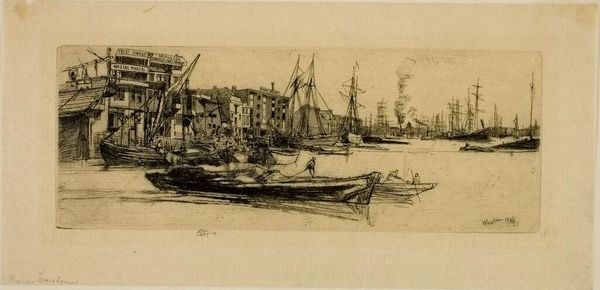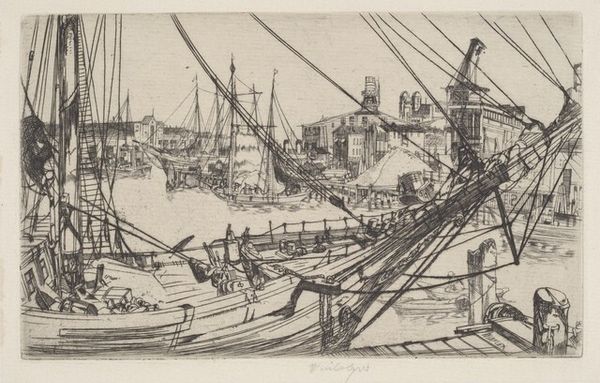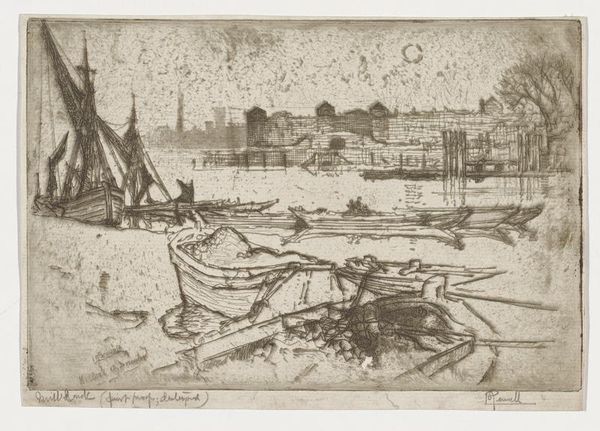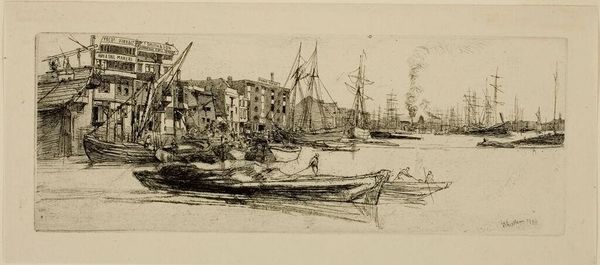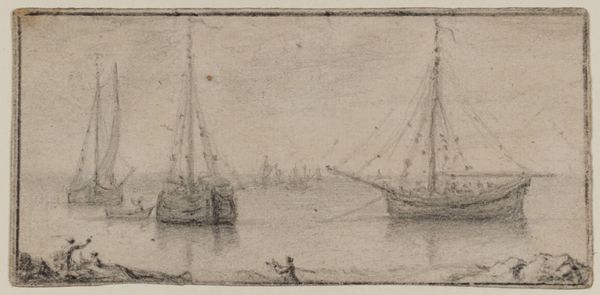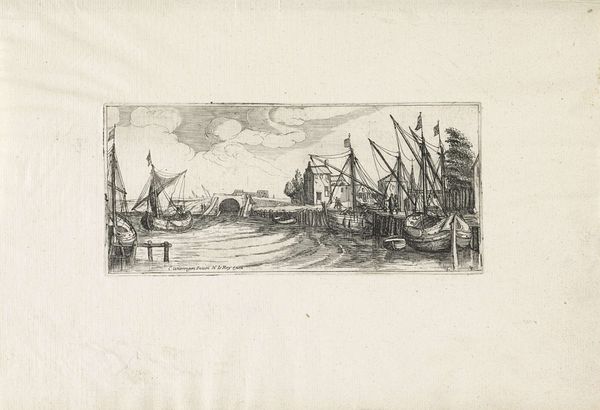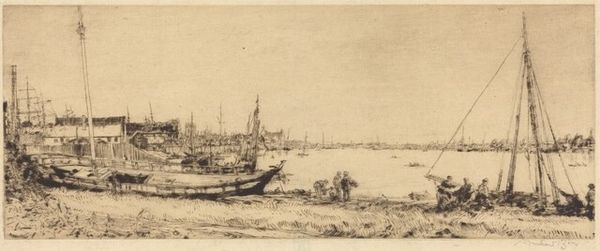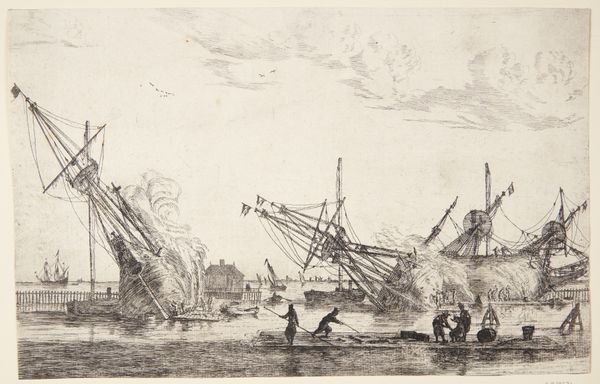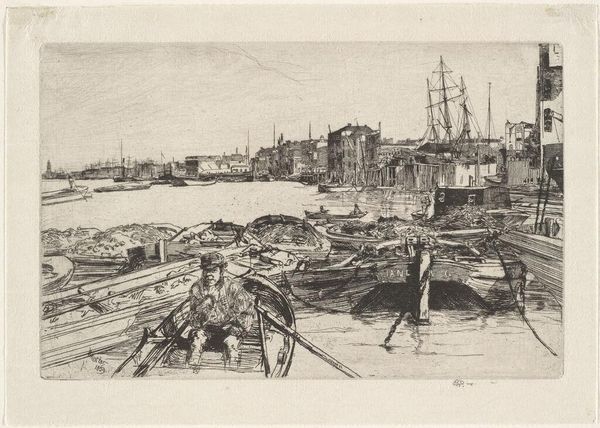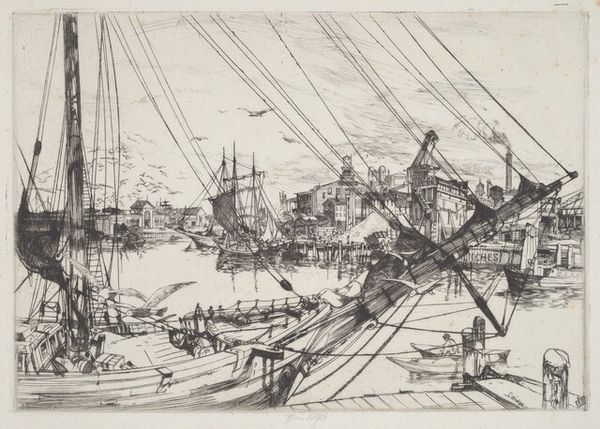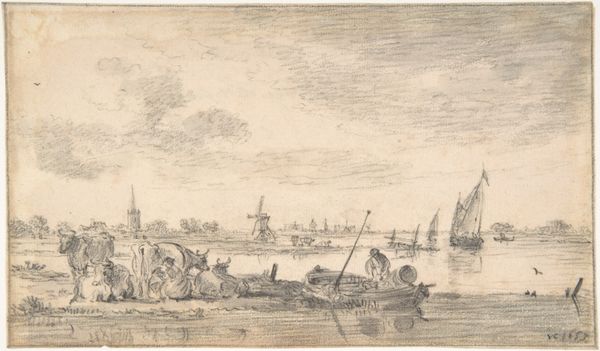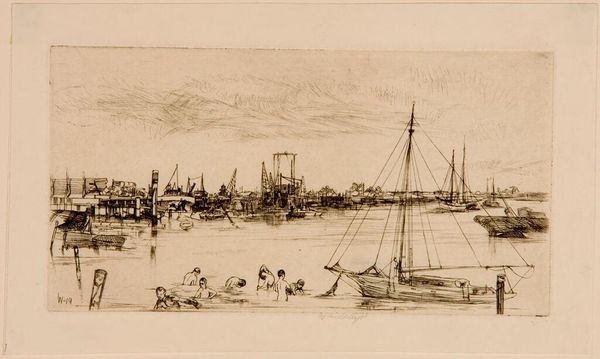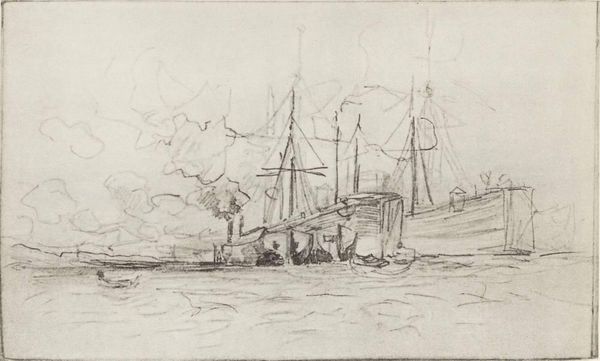
print, etching
#
ink drawing
#
dutch-golden-age
# print
#
etching
#
landscape
#
cityscape
#
realism
Dimensions: height 289 mm, width 1165 mm
Copyright: Rijks Museum: Open Domain
Editor: We're looking at Romeyn de Hooghe's "View of Rotterdam from the Maas (right half)," an etching from 1694. It's quite panoramic, depicting the bustling port city. The intricate details, created through the etching process, seem really striking. What are your thoughts on its visual structure? Curator: The interplay between line and space is masterful. Notice how the density of etched lines creates areas of deep shadow, giving volume to the buildings and ships, contrasting with the almost untouched paper suggesting vastness in the sky. The semiotic weight lies not just in representation, but in the formal relationships within the image itself. How does the composition guide your eye? Editor: It does jump around. The ships in the foreground definitely grab my attention first, then my eye is drawn to the cityscape, bouncing between windmills and church spires. Does this dynamic contribute to the overall effect? Curator: Precisely. De Hooghe employs a fragmented visual field. This could be interpreted as an attempt to capture the dynamic, almost chaotic, energy of a major port. Observe the layering of the composition. There is a dialogue between the foreground, middle ground and background. Each contains elements of visual interest and create a complete picture. The strategic use of the medium enhances our viewing. Editor: So the lack of a clear focal point isn't a weakness, but an active choice contributing to the overall theme? Curator: Indeed. The deliberate scattering of visual information emphasizes the multifaceted nature of Rotterdam. It discourages a singular, reductive interpretation and prompts engagement with the rich detail of the scene. A question to consider might be; how might de Hooghe encourage interaction between work and viewer? Editor: That's fascinating! I've always been drawn to the details, but I never thought about the meaning being so rooted in the composition itself. Curator: Through analyzing these structures, we can better approach meaning and significance of works in visual culture. The aesthetic is one aspect, while another aspect of semiotics focuses on how we may respond to the object as a representation, thus influencing the way we perceive an image or what we recall.
Comments
No comments
Be the first to comment and join the conversation on the ultimate creative platform.
